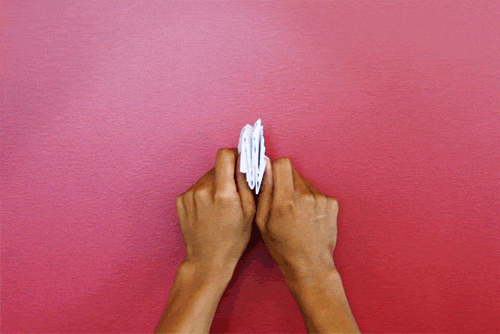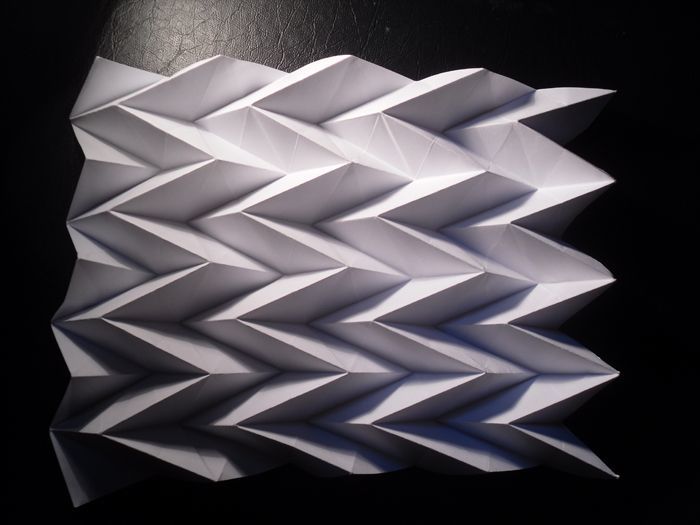Not Just Geometry! It's Physics!

Consider the animation above, where the rectangular paper is folded and then unfolded repeatedly. They are both done by controlling the opposite vertices of the rectangular paper in a single move.
Assume that the repeating polygons have the same areas and are symmetric. Also assume that horizontal parallel lines are perpendicular to the paper's edges. Which of the following best illustrate the interior creased polygons (including those bounded by the paper's edges) in the animation after unfolding the paper?
Clarification:
- Mix of quadrilaterals refer to class of 4-sided polygons not specified in the options.
- A trapezoid is a quadrilateral with a pair of parallel sides. It is also known as a trapezium in UK.
This section requires Javascript.
You are seeing this because something didn't load right. We suggest you, (a) try
refreshing the page, (b) enabling javascript if it is disabled on your browser and,
finally, (c)
loading the
non-javascript version of this page
. We're sorry about the hassle.


The movement of the creases is due to the inner vertices, which can be visualized as the motors during the map-opening and closing. Simply,
The parallel zig-zag lines create the movement about the inner vertices while controlling two ends. Here is the actual creases of the paper, which form the tessellations of parallelograms and trapezoids (this is included as shown in the animation):
Moving halfway, we have the following:
If suppose the lines are orthogonal, then there is less rigidity and movement of the creases. In this case, the inner vertices do not perform any work on the creases. Here are the following real-life examples that show why right angles folds wouldn't work:
For more rigorous and extensive mathematical and scientific proof, here are the articles: (1) , (2)